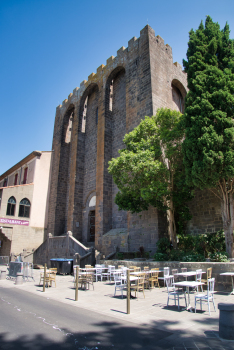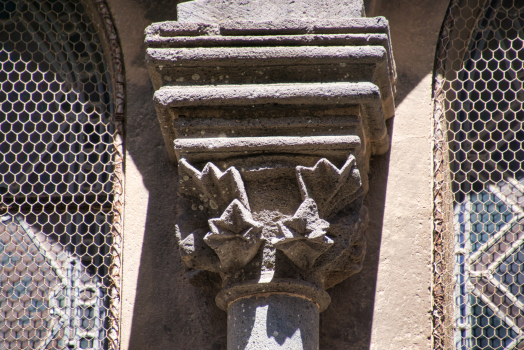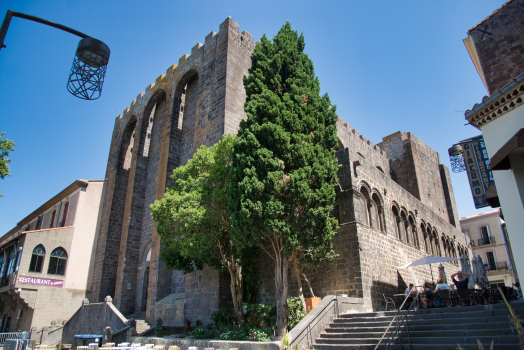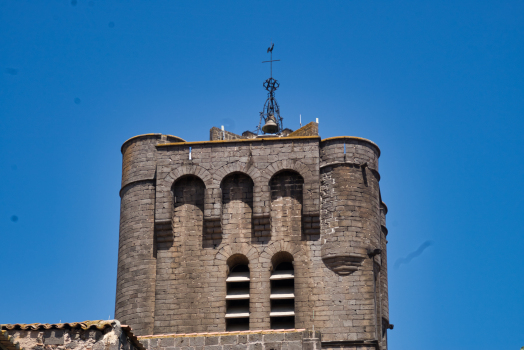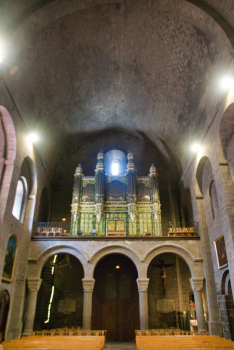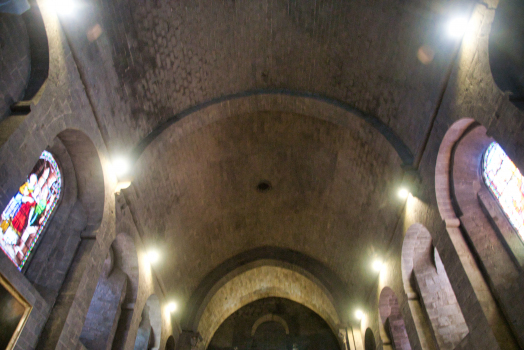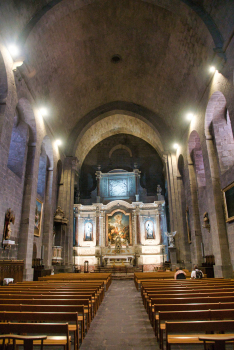General Information
| Name in local language: | Cathédrale Saint-Etienne |
|---|---|
| Beginning of works: | 12th century |
| Status: | in use |
Project Type
| Function / usage: |
Cathedral |
|---|---|
| Material: |
Masonry structure |
| Function / usage: |
Fortified church |
| Structure: |
Barrel vault |
| Architectural style: |
Romanesque |
Awards and Distinctions
| 1840 |
for registered users |
|---|
Location
| Location: |
Agde, Hérault (34), Occitanie, France |
|---|---|
| Coordinates: | 43° 18' 50.34" N 3° 28' 8.31" E |
Technical Information
Dimensions
| tower | height | 35 m |
Materials
| tower |
basalt
|
|---|---|
| walls |
basalt
|
| vault |
masonry
|
Excerpt from Wikipedia
Agde Cathedral (French:Cathédrale Saint-Étienne d'Agde) is a Roman Catholic church located in Agde in the Hérault département of southern France. The cathedral is dedicated to Saint Stephen, and stands on the bank of the Hérault River.
It was formerly the seat of the Bishops of Agde, the last of whom, Charles-François-Siméon de Rouvroy de Saint-Simon de Vermandois de Sandricourt, was guillotined during the Terror. The see was not restored after the French Revolution and by the Concordat of 1801 ist parishes were added to the Diocese of Montpellier.
History and description
The present building was constructed in the 12th century, beginning in 1173 under the direction of bishop William II of Agde, and replaced a Carolingian church of the 9th century that stood on the foundations of a 5th-century Roman church, formerly a temple of Diana.
The cathedral is remarkable for being built of black basalt from the nearby volcanic Mont St. Loup quarries. The building is extremely strong and was designed to serve as a fortress as much as a church: the walls are between 2 and 3 metres thick, and the square tower, 35 metres high, could also function as a keep, or donjon. The crenellations and machicolations are very prominent, and again, more characteristic of a fortress than of a church. It was declared a monument historique in 1840.
The Romanesque cloister which once adjoined the cathedral was demolished in 1857. Many of the materials, such as the capitals and the columns, were shortly afterwards reused for the construction of the lady chapel, which is now used as the entrance.
In the severe interior the 17th century high altar of polychromatic marble stands out all the more, as do the organs in the Baroque architectural style.
Of the cathedral's five bells, four are hung in the belltower, and were cast by Burdin-Aîné of Lyon in 1894 and 1895. The fifth is on top of the bellower and is used only for the chiming of the clock, cast in 1665 by Daniac Fulcrand at Béziers, and declared a monument historique in 1959.
Text imported from Wikipedia article "Agde Cathedral" and modified on July 23, 2019 according to the CC-BY-SA 4.0 International license.
Participants
Currently there is no information available about persons or companies having participated in this project.
Relevant Web Sites
Relevant Publications
- (1985): Languedoc roman. Editions Zodiaque, Saint-Léger-Vauban (France), pp. 245-252.
- About this
data sheet - Structure-ID
20018814 - Published on:
01/12/2005 - Last updated on:
11/08/2023

